In her renovated schoolhouse turned artist studio, TurningArtist Maria Stabio creates luminous multilayer narratives that draw inspiration from photos she has taken, found objects, and imagery of the Philippines, her mother’s home country.
Maria’s artistic process resembles printmaking as she transforms specific features in her source imagery into stencils that she then painstakingly configures onto canvas. Methodically spraying on layers of paint, she continues to blanket the canvas with her stencils, often spraying on up to three coats of paint. With this process, Maria creates a multitude of overlapping silhouettes that, when all the stencils are removed, create a mesmerizing confusion of color, shape, and positive and negative space in which each once identifiable subject loses its familiarity and begins to become something new. Through the use of color and the manipulation of stencils, Maria’s work celebrates the complexity of human identity in relation to objects and space.
Can you tell us about your journey to becoming a professional artist?
My journey started in high school when I was accepted to the only Advanced Placement Studio Art class available. At that point, I felt that my aspirations of becoming an artist were being validated in a real way. Attending art school at Boston University was a formative experience. Those years honed my budding talent and also formed my identity as an artist. Being accepted to the graduate program at Columbia University’s School of Arts was a huge milestone and it’s something I’ll always be proud of. It also helped me establish a life in New York. The connections made during that time have helped grow my artistic practice here in the Northeast over the last decade.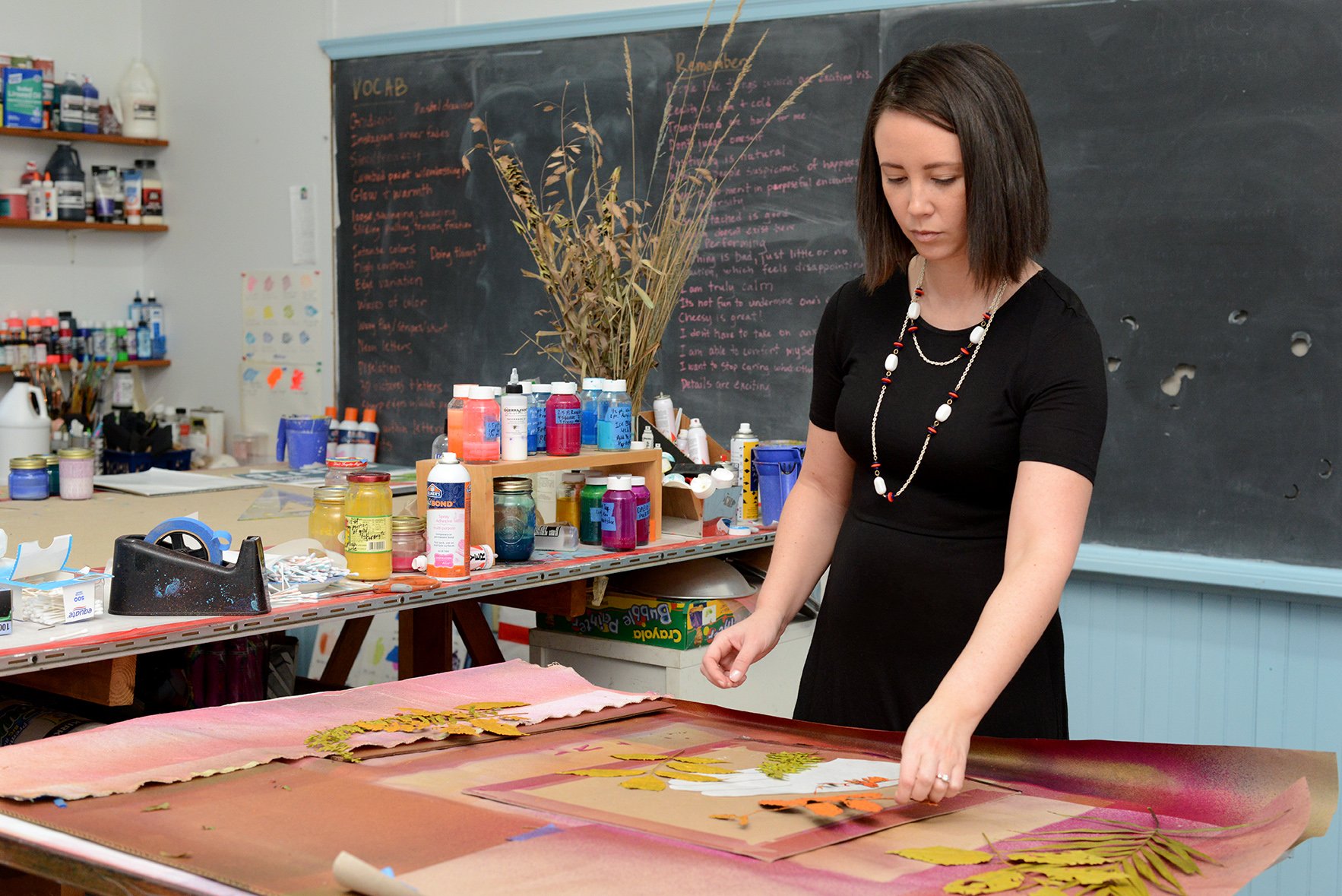 Tell us more about your process.
Tell us more about your process.
Once I’ve gotten an idea of a painting’s content, I’ll start making a drawing of the painting on freezer paper (a thick type of coated paper). The paper is then cut into the necessary stencils, using them to mask areas that I’d like to protect from being painted during the spraying process. The drawing is then transferred to a canvas or panel by tracing the cut stencils onto it. This helps me figure out where to apply the selected base layer colors. The next step is painting the base layer which is often the brightest and most visible color in the whole painting. This base layer will be mostly obscured although bits of it will shine through the transparent layers of paint and small parts of it will be masked off. When the base layer is dry, I apply the stencils and spray the second layer of color using a disposable sprayer called a Preval Sprayer which makes small dots of paint. Because the layer of paint is not completely even, the dots combine visually to make secondary and tertiary colors with the layers above and below. Once the second layer of color is finished, I apply the second set of stencils and place a collection of flattened leaves and grasses on the painting’s surface before spraying the third and final layer of color. Typically each painting has no more than 3 layers of paint.
What about your current work?
For the last two years, I’ve been working on a series about visiting family and getting acquainted with the Philippines, my mother’s home country. I formulate ideas for paintings based on experiences I’ve had while being there. The experiences can be simple. For example, the act of washing up, known as Tabo, traditionally involves using a large ladle filled with fresh water from a big bucket. The ladle is used in place of a western shower and the water is poured over the head or body manually. I realized that by translating this process into painting I could create an unfamiliar perspective (Tabo) on a familiar act (Showering) thereby reinventing its perception. It’s a way of teaching myself and others about the wonders this culture holds through painting.
When you are looking for inspiration, what resources do you turn to?
I spend a lot of time searching through photos on my phone from visits to the Philippines. There’s also a list on my phone with ideas for paintings that I’ve added to overtime. Lately, I’ve been relying on Instagram for new source material; images posted by family or found while searching through hashtags of places in the Philippines that I’m already familiar with. The images provide me with a jumping-off point. Often I’ll start with an aspect of the image that stands out to me, say the shape of the cloud in the sky or a silhouette of a figure in a particular setting. During the drawing phase where I work out the shapes and colors of each piece, new elements from other images may be added and some things from the initial image will also drop out. It’s a very fluid process that takes anywhere from a couple hours to a few days sometimes.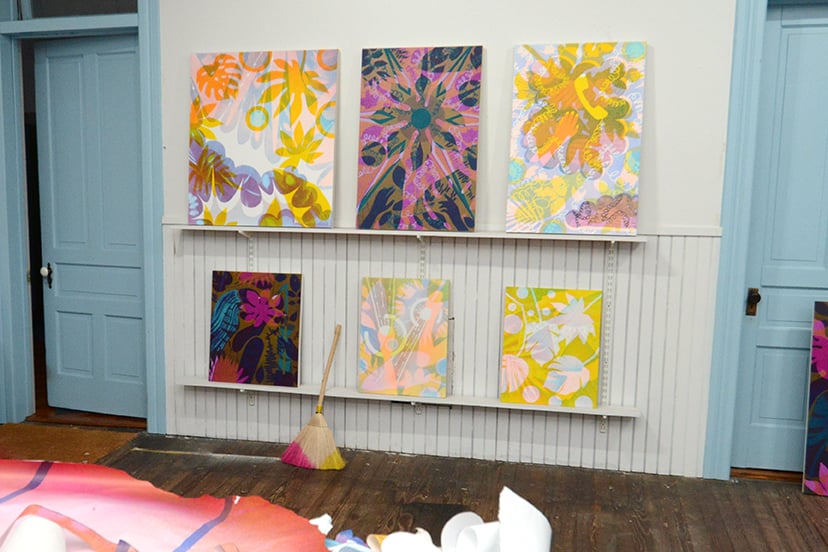 Walk us through a typical day in your studio. What is your routine?
Walk us through a typical day in your studio. What is your routine?
Usually, the day starts around 9 am. I am lucky to have my own property, a former schoolhouse in rural Barnesville, PA which I renovated in 2016. The kitchen and Airbnb guest room are downstairs, the income they generate support the home’s operating expenses. The upstairs is dedicated to my private living space and painting studio. I can easily start my day with no morning commute! Typically I spend about an hour drawing and generating new ideas for pieces. If I find an image online, I’ll trace its desirable parts onto clear acetate and project the line drawing onto a canvas. After locking in the scale, I’ll then trace the drawing onto freezer paper and cut out the necessary stencils. Freezer paper has been my go-to since it won’t disintegrate when wet, it’s also economical enough to buy in large quantities. I go through a lot of it! Next, I’ll block out the colors and layers for each piece. Sometimes I’ll make a step-by-step list with the order of colors and at what point certain areas need to be masked off. It’s easy to get confused when there are multiple layers. I can’t go backward--If I make a mistake, it means I must start over! Depending on the size of the piece, this preparation process could take a day or two. When I have everything ready, I’ll begin placing the stencils and leaves and spraying the layers of color as planned. The spraying process is the quickest part of the piece, it may only take an hour or two to finish. Because I use acrylic paint, the layers dry quickly. Finally, I’ll reveal the entire image by removing all the stencils and the leaves. It’s at this point that I’ll finally take in the image and evaluate it as a finished piece or a failed one.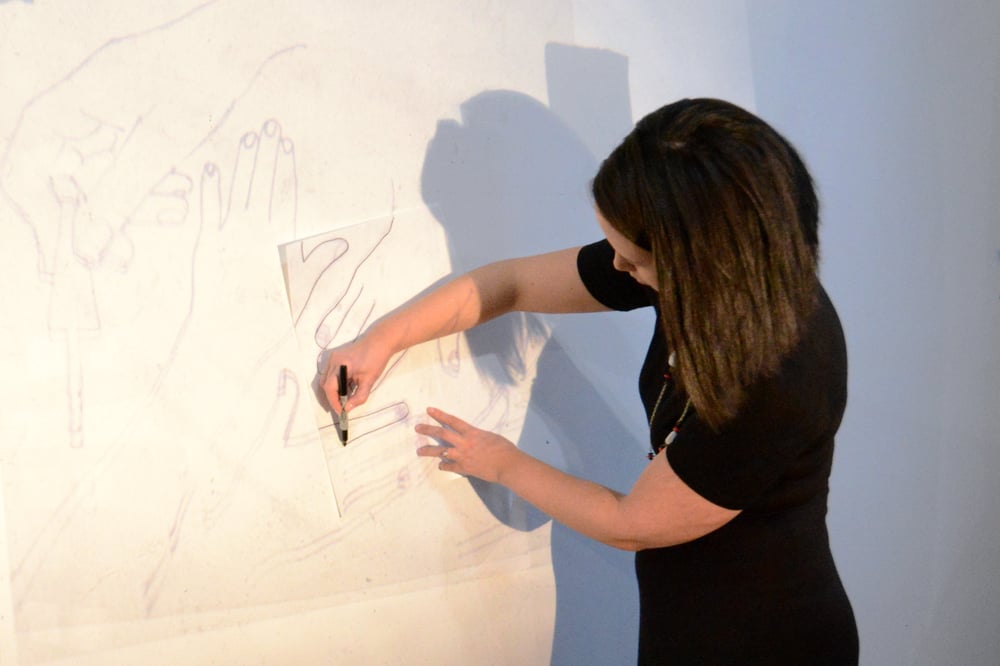
For emerging artists, finding the right rhythm to be productive in the studio can be a challenge, what advice do you have for staying productive and focused?
Emerging artists are some of the most hardworking people I know! I’ve learned that it’s important to make your artistic practice a priority and to work hard towards your goals. However, this can be really overwhelming over the long term. It’s important to be kind to yourself! I’ve gotten burned out in the past and made a lot of life changes to put my artwork back at the top. For example, I chose to live in New York City and rented a studio for $675 a month about 45 minutes to an hour away from my apartment via subway or bus. My job paid well and I didn’t feel the financial pressure of the studio, but on my days off the last thing I wanted to do was hop on a subway for about an hour (maybe more with delays!). Nothing was happening in the studio because I wasn’t spending enough time working there, even though I paid a lot for that space. It wasn’t a sustainable solution. At the end of the day, I had to make a choice--where did I feel inspired? How could I get rid of the roadblocks to making my work? Moving my studio and home outside of NYC to a rural area definitely improved my focus and helped inspire my new work. For anyone who has a hard time staying productive and focused, I’d say 1. Be honest with yourself about the roadblocks you’re facing & 2. Think about creative ways to get around those obstacles. It may mean making some real sacrifices but in the end, you may be better off for making those difficult choices.
What is your advice for combating creative block?
Creative block is a daily part of my process! I wish I were an artist who had ideas constantly flowing--it seems like those types exist everywhere on Instagram *sigh* haha-- but I fight to move from one painting to the next. The wonderful and yet simultaneously horrible thing about my process is that I go through ideas quickly. I may spend 3 days developing and then executing an idea that does not translate at all. Once I’ve made a failed piece with a particular idea, it’s really hard for me to just move on to a completely different piece and start over again. The nature of the layering process doesn’t easily allow for reworking or repainting, I simply need to start from scratch or decide to abandon the piece altogether. Of course, the failed piece may not be a complete waste, sometimes the idea just needs to sit for a while. I’ve absolutely had paintings that were reformulated and made successfully on a second attempt once I finally realized what needed to happen in order for it to take shape. The real advice I have about combating creative block is: you must have faith that you’ll get through it! It’s hard to confront a blank surface. But it’s also completely logical to tell yourself that yes, I can make great things--no artist makes just one single perfect piece! Artists are prolific and abundant by nature and will make many wonderful pieces over their lifetime. If you feel that your resources and inspiration are tapped out, it’s not a forever state of being, it’s just temporary.
As an artist, how do you measure your success?
Success manifests itself in different forms depending on the day. When I make a painting I love, I feel successful. It’s a fulfillment that is very tangible and satisfying, also it’s sustainable as long as I have the time in the studio to keep making work. Career success is different and more elusive. I’ve learned that it’s important to separate the two. I have control over the work I make and that’s reassuring. Career success is more uncertain and harder to attain, it’s the most frustrating part of being an artist in my opinion. I’ve felt most successful when I’ve been recognized by fellow artists. To have that mutual acknowledgment between two artists who respect and understand each other’s work is really special. Not everyone will get what you’re doing, so when it happens, soak that moment up and store it away for the times when you feel a little less understood!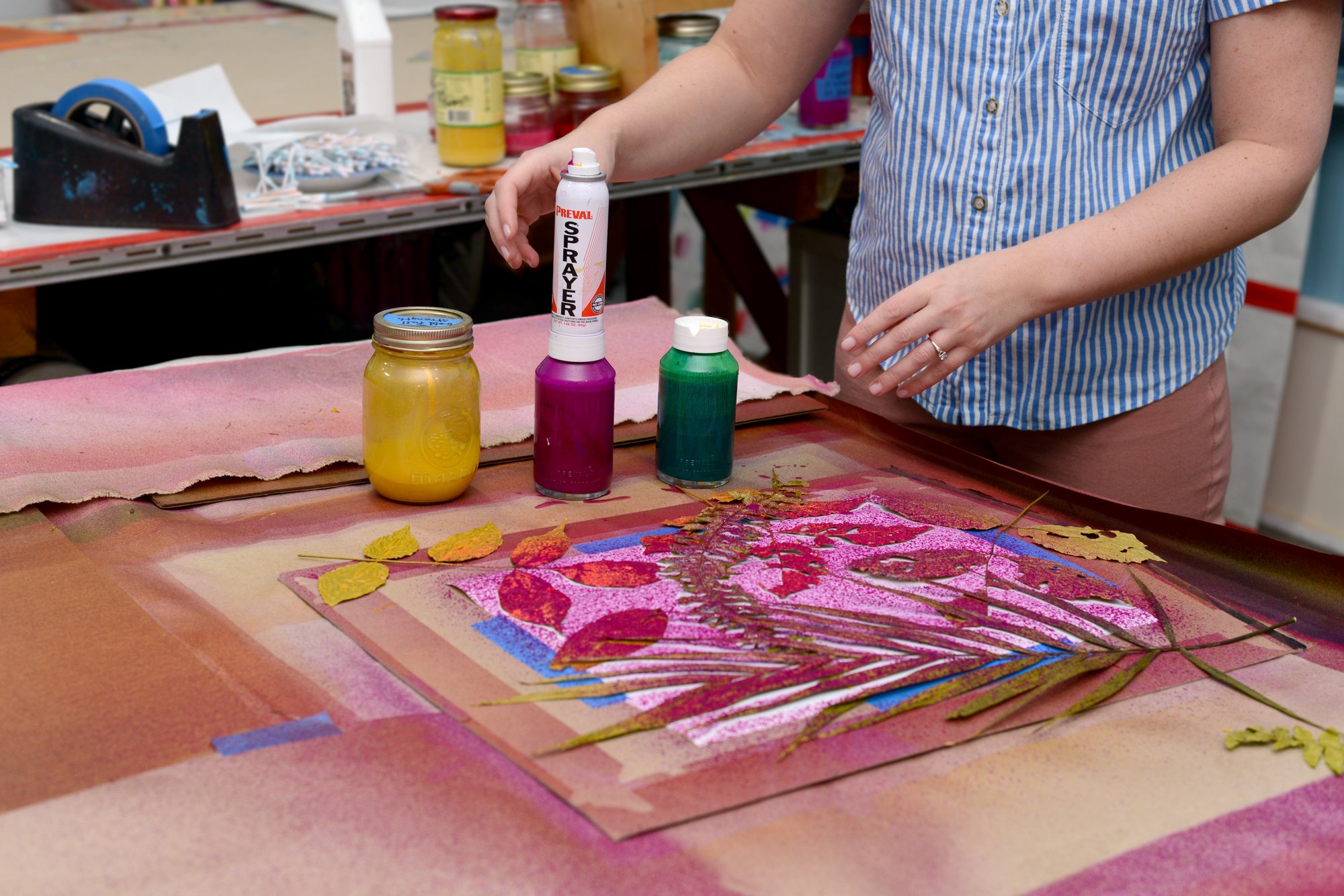 How do you see the art market changing? Where you do see yourself in this transition?
How do you see the art market changing? Where you do see yourself in this transition?
I think the art market is much more deconstructed overall. Artists no longer need galleries to sell their work. The new model is to be a free agent and collect a certain amount of cultural capital on social media which then helps establish you as a well-known artist. Eventually, you can make money by partnering with large brands, taking private commissions, or selling work directly through your profile. It’s an exciting time! Personally, I’ve been evaluating how my work can be adapted for a public space or a pop-up style event. Painting is my favorite medium but it can feel a little outmoded in that context. Many artists who make installation or performance type work benefit from the “experience seeking” trend. When artists work in conjunction with a special event, the art is marketed as a limited-time attraction that drives a lot of visits to places like store openings or art fairs. I have yet to carve out a strategy but I’ve been thinking about getting into wearable art, designing wallpaper, or even installing murals onsite. This would be a different yet exciting direction for me!
What advice do you have for artists who are beginning to build their careers? Have there been any habits or strategies that you have adopted that you feel have created more opportunities or visibility for your work?
First, develop and nurture a strong network. This network is comprised of anyone who supports you and your artwork. I used to think that an effective network had to be people who would buy my work or had connections to a gallery--that was short-sighted! Artists really do help other artists. Some of the most successful artists I know were given huge life changing opportunities by more established artists who saw something special in their work. Also, artists act as curators so consider being one yourself. If you curate a great show, chances are that one of the artists in that show will also include your work in an exhibition they curate. It’s all about setting up future opportunities through the people you know. Secondly, you must have some kind of social media presence. The forum you choose is up to you. Use that platform to extend and build your network. If someone likes your work, the first thing they will likely do is look you up online. If they see that you have a legitimately built following (don’t buy followers!), it gives your work credibility.
Do you consider yourself, and all artists, to be entrepreneurs?
Yes definitely, artists are entrepreneurs! We’re not all lucky enough to make a living off of our work but that doesn’t mean we shouldn’t act accordingly. It’s important to be professional and to treat your time and your resources as if you are running a profitable business. Respond diligently to inquiries and emails--be available! Really consider every opportunity that comes your way. That being said, you don’t have to do everything that’s offered to you. Evaluate whether or not the time and money invested will result in your desired outcome. I say this because I often find myself having to choose between time in the studio and social events or one-night affairs which are equally important to participate in. In these situations, I outline the pros and cons when making these difficult choices.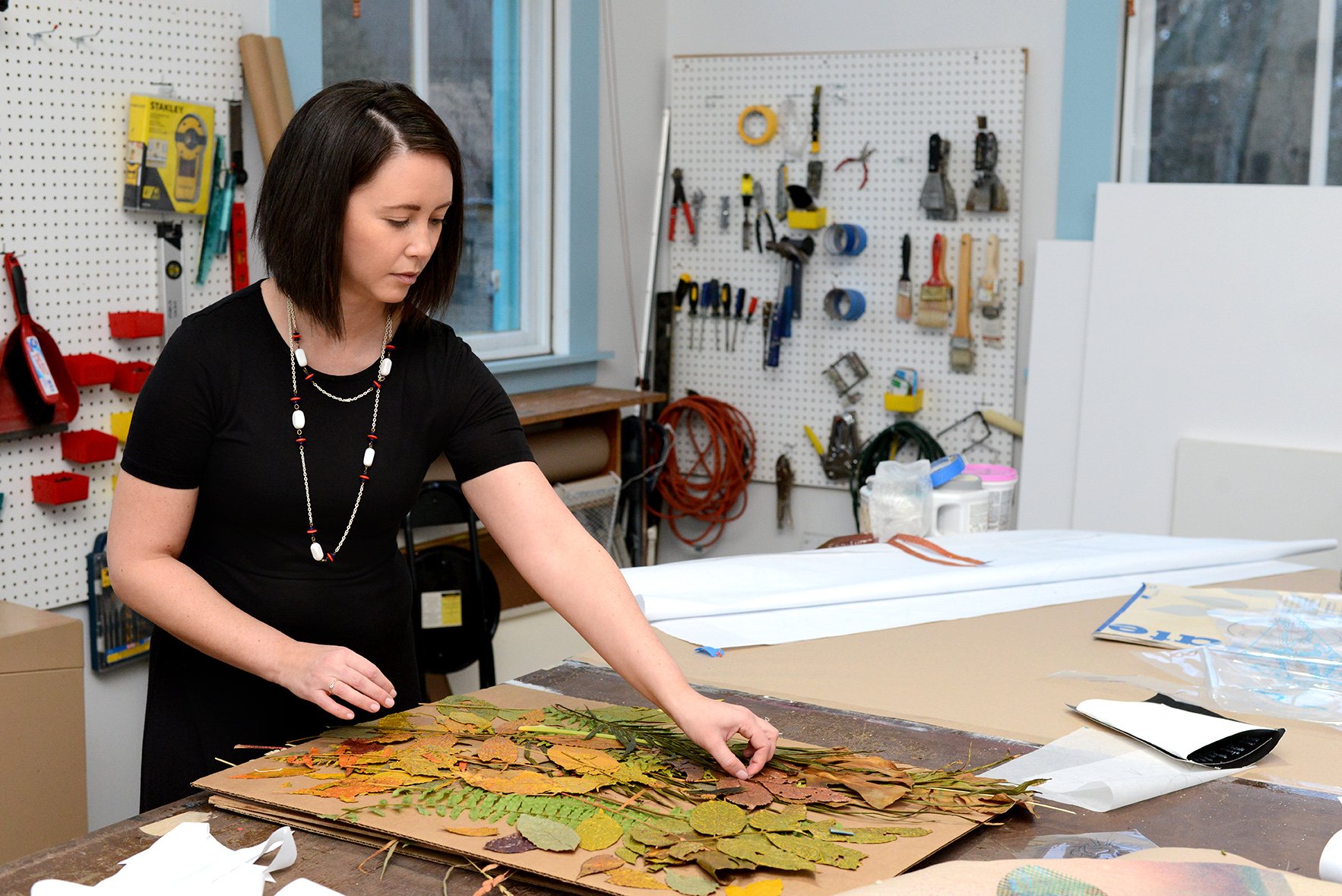
Failure is an inevitable part of success in any field. Do you have advice for overcoming setbacks?
It’s important to keep moving forward! Sometimes the hardest part is shifting gears and making those first steps after failure. I personally have a really hard time with transitions. But once you get going, it only gets easier.
What sparked your interest in partnering with TurningArt?
I began working with TurningArt as a way to bolster earnings and to increase visibility. It seemed like a great way to have my work out in the world without having to personally be responsible for things like logistics and printing. It’s also possible to get immediate feedback by using the artist dashboard to see which pieces are resonating with people.
In my experience, TurningArt has been the most supportive company I’ve worked with. The staff are incredible! Abby Frank has been instrumental in getting my name out there. I love that TurningArt sees its artists as a valuable resource and works so hard to provide real opportunities for them.
What does having your artwork in the workplace and other commercial or public spaces mean to you?
To have work in a commercial or public space is such a special opportunity. You’re able to have people see your work in an accessible context. Art can feel exclusive sometimes, so it’s great to show in spaces that aren’t your typical gallery, white cube or museum contexts!
To see more featured TurningArtists, return to our blog. To get Maria Stabio's art in your space, set up a free consultation with an Art Advisor here!
All photos by: Katharine Ryals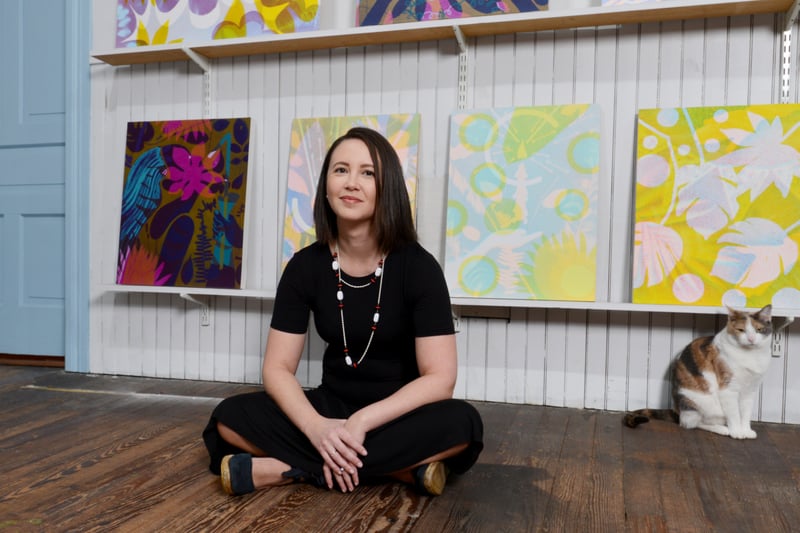
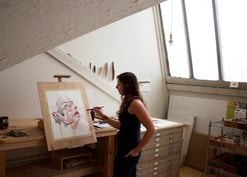


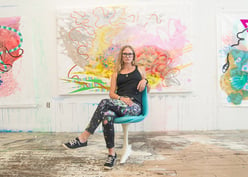
_VSCO.jpg?width=332&height=177&name=TMoss_Continuum%20Sliver%20copy%20(1)_VSCO.jpg)

